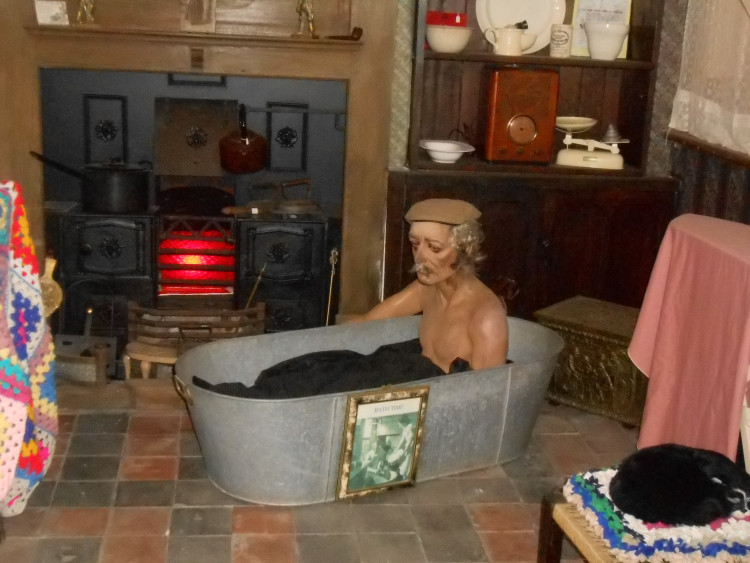FEATURE: My Journey to the Centre of the Earth (via Chesterton)
By Kevin Raftery 23rd Jan 2023
By Kevin Raftery 23rd Jan 2023

My only hands-on experience of the mining industry was as a child when living in the former Forest Park area of Hanley, which displayed the 'Devil's chimneys'. The chimneys were black fissures in the hot earth encasing red-burning embers. It was caused by Hanley Deep Pit. In addition, the only appropriate coal paradigm I can muster occurred during my childhood when I was made aware of the natural secure warm glow which could only be associated with the coal fire (having fetched a shovel of coal or even slack from the coal bunker or the coal house on many occasions). I was always a dab hand with the poker too; and knew how to make and then 'draw' a coal fire by placing a double sheet of newspaper around the fireguard.
In saying that, nebulous second-hand titbits regarding local pit disasters, tin baths, dust diseases, blackouts and strikes of the 1970s and 1980s respectively, about sums up my mining knowledge.

When deciding to visit the former Apedale Colliery (now Apedale Heritage Centre in Chesterton - Newcastle-under-Lyme), the Holditch Colliery Disaster of 1937, in which thirty died and eight were injured as a result of a series of explosions was brought into focus. The actual Holditch Colliery gates are actually in situ outside the centre.
Although the heritage centre is free to peruse, the tour of the Apedale Colliery costs £8 (with informative guides) and lasts between forty-five minutes to an hour. There are concessions for children/older adults. And yes, I did feel a bit of a nit wearing the hard hat, but, let me tell you, I was glad of it later on in the tour, considering I bumped my head twice underground (2015).
Historically speaking, although it was dangerous backbreaking work mining the innermost recesses of the earth (where some of the men even toiled naked, such was the heat) there is much more to the colliers' story. Similarly, I have always been proud to relay that both my father, grandfathers, and great grandfathers were miners (one being a Coal Hewer).
Mineworkers would need to equip themselves with the appropriate geoscience when burrowing below ground. As well as coal seams and other rock formations to learn about, there are theories around funnelling the air supply together with managing gases like methane (firedamp) carbon dioxide (blackdamp) and the odourless carbon monoxide. There is also the prerequisite of needing to understand timers and explosives (like dynamite) to dislodge the obstinate black rock. Then there are the miles of underground tunnels that would have to be navigated, where conveyers, children and even horses have assisted in excavating the tonnage.
For my part, the most telling snippet of data acquired during the visit to the Apedale Valley was that coal is the product of millions of years-old decomposed tree, plant and swamp matter. Who would have thought that? Furthermore, 'a splendid education' best illustrates the encounter, even though I only scratched the coal surface so to speak. It has to be said that I speak as I find and am not easily impressed or influenced, being both cynical and critical if the situation demands.
More importantly, to be mindful of the myth regarding the miner being propagated as an uneducated blackened-faced labourer will help avoid fool's gold-like mistakes with ancestral job description identity in later life.
Which is probably the most important lesson to be learnt of all.
CHECK OUT OUR FREE NEWSLETTER!
5 TOP STORIES EVERY FRIDAY!
Click here to sign up: stoke newsletter
Share:

























